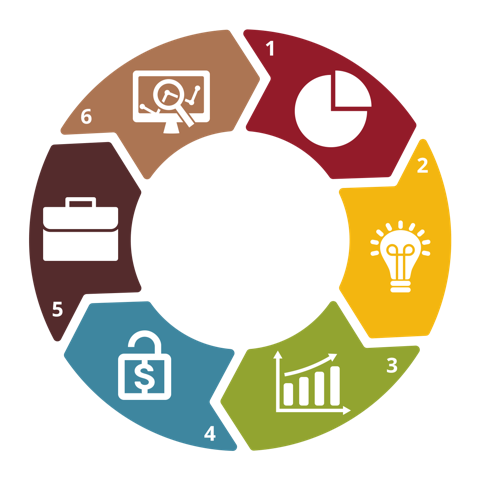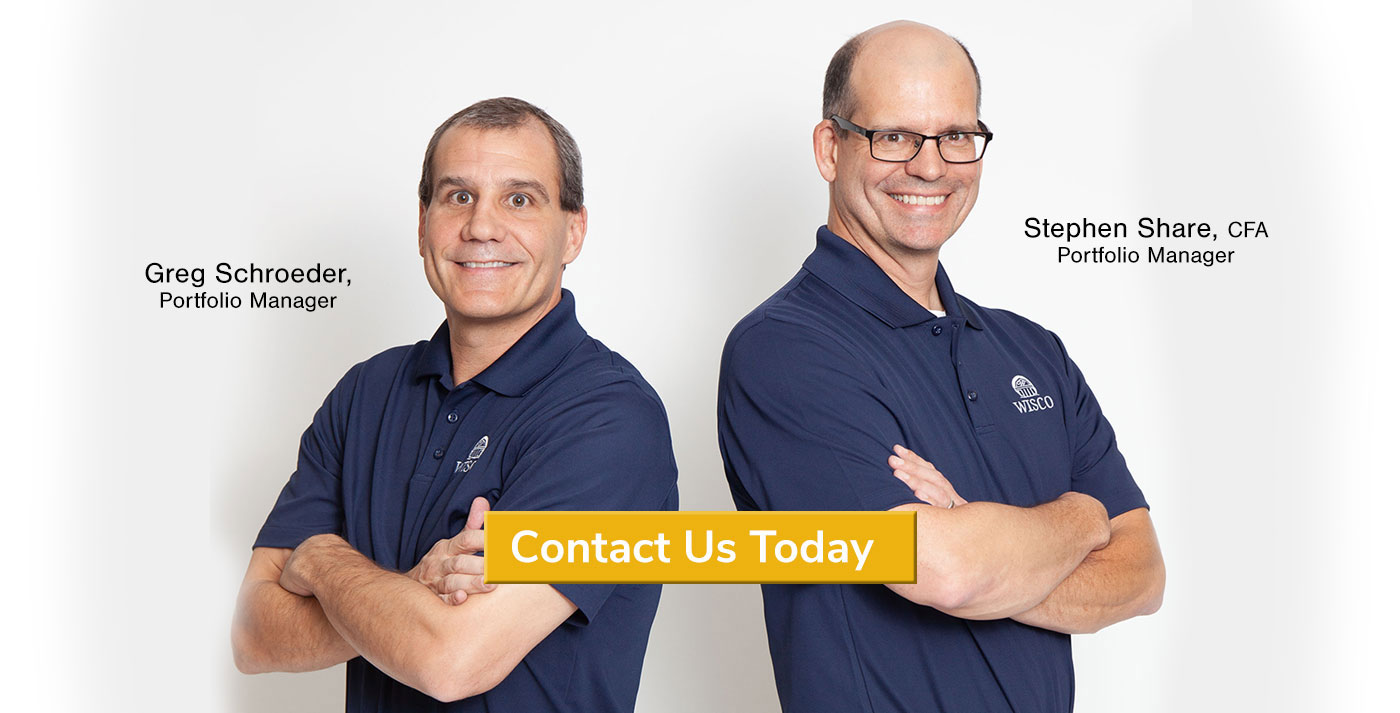Process
Wisco’s Investment Process
It is not outsourced to a corporate office management team, a mutual fund company or brokerage firm to select your investment strategy with their products or recommendations. We are the fiduciaries and we determine the best vehicle possible to get returns for our clients.

Process:
Our Six Step Investment Process
Our Academic Investment Process…a behind-the-scenes look at what happens after our initial meeting with you to learn about your financial situation, needs and desires and assess your level of risk tolerance.
At Wisco, our goal is to provide clients with a liquid portfolio (something that we can sell quickly) that targets a specific level of return while taking the least amount of risk possible to achieve that targeted return. Our investment process has six steps listed below.
- Collect & Analyze Data
Wisco maintains a database with over 25-years of performance history for a wide variety of assets. This data allows us to analyze not only how a particular asset has performed over time but also to study the interaction between different asset classes. For example, when asset X goes up does asset Y tend to do the same thing or something different? By analyzing these types of relationships (with the help of computer modeling software) we can build efficient portfolios that maximize the benefits of diversification.
- Select Asset Classes
In selecting asset classes we consider two primary criteria. Can it improve the overall diversification of our portfolios and are we able to make a cost effective, liquid investment in the asset class. This liquidity requirement keeps us from investing in assets such as rare coins, art and rental property. The five asset classes we currently invest in are: Domestic Equities, International Equities, Domestic Fixed Income, Alternative Investments and Money Markets.
- Forecast Potential Returns and Risk
While studying historical relationships between returns and risk is an important part of our investment process, this analysis is incomplete without also incorporating a view of what the prospects are for these asset classes in the future. In this part of the process, we assess the likelihood that an asset will perform better or worse than it has historically based on its current fundamentals and valuation.
- Security Selection
We look to invest in securities that are cost effective and perform similar to an underlying index or asset type. For these reasons, we generally invest in Exchange Traded Funds (ETFs) instead of Mutual Funds. On the cost side we can build a portfolio with ETFs that cost just 0.10% to 0.15% per year compared to an actively managed Mutual Fund that may charge more than 1.00% annually. Furthermore, we have found that ETF performance is highly correlated with the asset class or index whose return we are trying to replicate.
- Create Customized Portfolios
In this step, we marry our future forecasts and historical data in an optimization program. This program produces five different portfolios with the most aggressive generally as volatile as the domestic stock market and the most conservative about one third as volatile as the domestic stock market. All five of these portfolios are considered “efficient” in that each has the best possible expected return for a specified level of risk. We can also customize a portfolio with individual stocks and bonds.
- Implement, Monitor and Adjust
We rebalance our client portfolios on a regular basis. We monitor the results and think about how we can improve the returns of these portfolios every day. We are continually assessing if our forecasts are too aggressive or too conservative and regularly asking ourselves how current developments are changing market fundamentals and asset valuations. We also closely monitor new investment opportunities with an eye towards improving the cost structure and overall performance of our ETF lineup.



